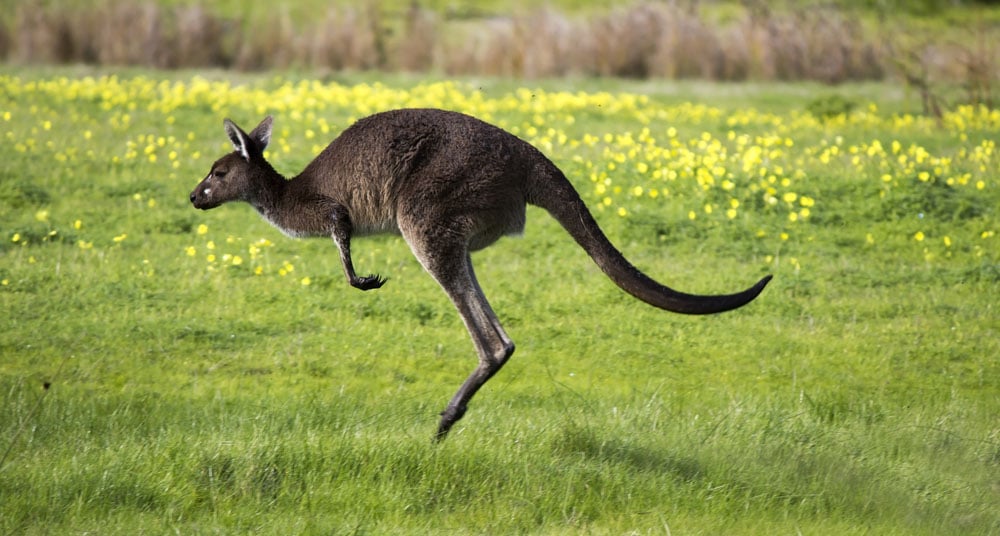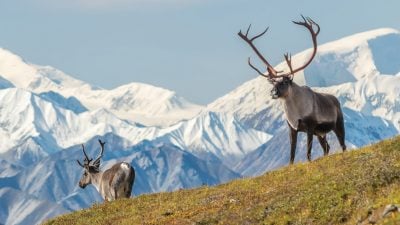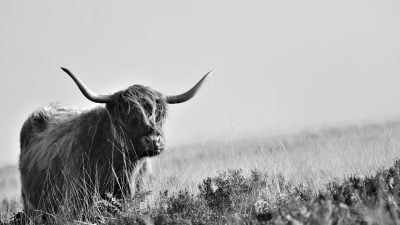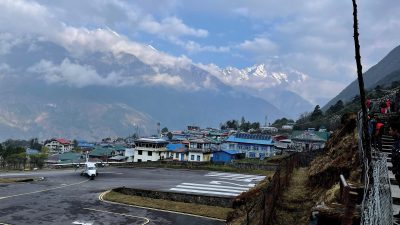Home / Australia & South Pacific / Australia / Why do kangaroos hop?

Why do kangaroos hop?
You’d have to ask a kangaroo why they hop. Their answer (if you could understand roo) would possibly be “because my mum always did”.
Our friends at Echidna Walkabout Tours are full of amazing information about these amazing marsupials! So, in the absence of roo input, here are some of the advantages of hopping:
1. Hopping is energy efficient.
This is probably the most important single factor. Hopping uses less energy than four-legged running at the same speed.
It is critical in a dry, unpredictable environment to be efficient with resources. Kangaroos sometimes have to travel long distances, in oppressive heat, with very little water to drink and very poor food in their bellies. Most mammals would not survive.
Kangaroos eat grass. Australian grasses can be fairly low in digestibility, and sparsely cover the ground. The grass dries off quickly, and during summer only the first few millimetres of the grass is green – the rest is dry and golden. So for the whole of summer (and sometimes longer in drought) adult kangaroos have to move around, socialise, breed, and feed their babies on a diet that wouldn’t feed a lamb. Food = energy. Hopping doesn’t use much food energy, compared to other forms of locomotion. So kangaroos can survive on their poor diet.
Like most grazers, kangaroos need to drink water daily. But in their country, surface water can be hard to find and unreliable. When the surface water dries up completely, they have to hop to better watering sites. Exertion depletes the body of water. So an efficient means of movement, like hopping, uses less precious water than other forms of movement.

2. Hopping is quiet.
We can’t find any scientific research to support this, but it is our experience that kangaroos move extremely quietly compared to other animals. Maybe because they are in contact with the ground so little, or because their feet are soft (like a dog or cat’s), or maybe because they have only two feet to worry about they can place their feet carefully. Whatever the reason, a large mob of kangaroos can move very quickly without much sound at all, even through Bush full of sticks and dry leaves.
The stride length of a kangaroo hopping at speed is long – 6 metres at 50km/hr. That means they are only touching the ground 2 times a second. In contrast, a galloping horse touches the ground four times in each stride, and has a foot in contact with the ground at all times creating a constant drumming sound. At the same speed a horse touches the ground 8 times a second.
Why is this useful? Kangaroos’ natural predator is humans. Being able to escape quietly could mean the difference between life and death.
3. Hopping is flexible and allows for sudden changes of direction.
Kangaroos have an amazing ability to turn quickly! They can achieve a 180 degree turn in a single hop. Hopping as a means of locomotion probably gives kangaroos an ability to turn “on a pinhead” which would be very useful for escaping predators. We don’t know of any terrestrial mammal that can turn as sharply as a macropod.
With the centre of gravity at the pelvis, the kangaroo is a pivot that can almost turn on a point. Most land-based mammals have a long body, with their weight centred between the front and back legs. The length of the body limits the turning circle. In a way, they have to wait for their back legs to catch up. Also, the speed limits the turn – the faster they go, the harder it is for them to turn, and the more stress it puts on their legs, ankles and feet. We suggest that even at speed a kangaroo could turn very sharply without damaging their legs because most of the turn is executed while airborne.
Kangaroos live all over Australia, in grasslands, in mountains – hopping allows them to move quickly over any surface, no matter how rough, steep or uneven.
4. Kangaroos have evolved from possum-like ancestors who bounded along tree branches and the ground. Hopping could be just an adjustment on four-footed bounding.
Small macropods, like the Musky Rat-kangaroo, bound along the ground using their front feet a bit. Brushtail Possums can bound or run, and sometimes sit up on their back legs just like a small kangaroo. So it’s not hard to imagine the possum-like ancestors of kangaroos – bounding on the ground, running along branches. Over time they got bigger, moved into the grasslands where there were no branches to clamber along, and their ability to bound got them out of danger quickly. Over time their ability to run ceased altogether.
It is interesting to note though that kangaroos can use their legs independently in an alternating fashion. But only when they swim!

Get more travel inspiration by email.
Subscribe
1 Comment
Most Voted

Get the latest travel trends & hear about the best deals on vacations around the world.
If you’re a Globetrotter, these are the newsletters for you!



